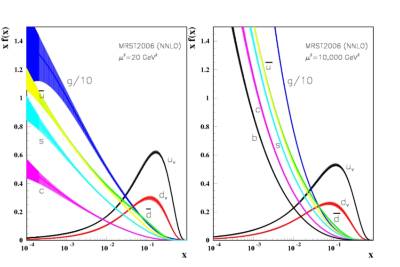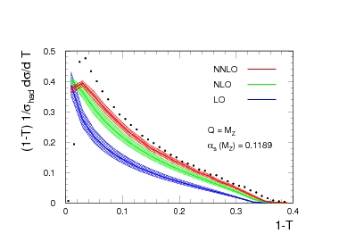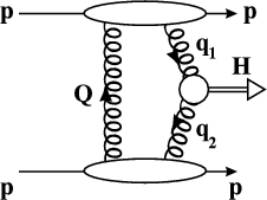|
|
Strong Interactions
Quantum Chromodynamics (QCD) is the theory of the strong interaction, one of the four fundamental forces in nature. It describes the interactions between quarks and gluons, and in particular how they bind together to form hadrons. One of the triumphs of modern particle physics has been the extent to which QCD has successfully accounted for the strong interaction processes observed at high energy particle colliders, and particularly phenomena such as `jet' production. Reliable and quantitative QCD calculations are nowadays essential in understanding the enormous amount of high quality experimental data available, particularly since many sources of new physics are obscured by standard QCD processes.
The IPPP has a long tradition of activity in strong interactions: in understanding the internal structure of the proton, jet production rates and diffractive production. We are heavily involved in the FP420 proposal to build forward proton tagging detectors at ATLAS and / or CMS in the 420m region at the LHC. The IPPP has also been at the forefront of recent “twistor” inspired developments in computing scattering amplitudes
|
Parton distributions of the proton are central to understanding all high energy hard scattering processes initiated by protons. The MRST series of partons are used throughout the world, and are always among the most highly cited academic papers in Particle Physics. The distributions are obtained from global analyses of deep inelastic and related hard scattering data. The global fits are regularly updated and incorporate the latest data, as well as new theoretical developments. The latest MRST parton sets can be found here.
|
 |
|

|
Precision studies of QCD at electron-positron colliders are based on measurements of event shapes such as the Thrust distribution. To match the high experimental accuracy, precise theoretical predictions are needed for a reliable interpretation of the data. The figure shows the leading order (blue), next-to-leading order (green) and new next-to-next-to-leading order (red) predictions in perturbation theory. The higher order corrections turn out to be sizable, and describe the data from LEP much better.
|
|
Central exclusive production double diffractive Higgs boson production, p p → p + H + p, is now recognised as an important search scenario for the LHC. The two protons can scatter through a small angle leaving a very clean event with a centrally produced Higgs boson. The FP420 project aims to install forward proton detectors at the LHC 420 m up- and down-stream around ATLAS and / or CMS and may be able to provide important information on the Higgs sector of the MSSM.
|
 |
|
|